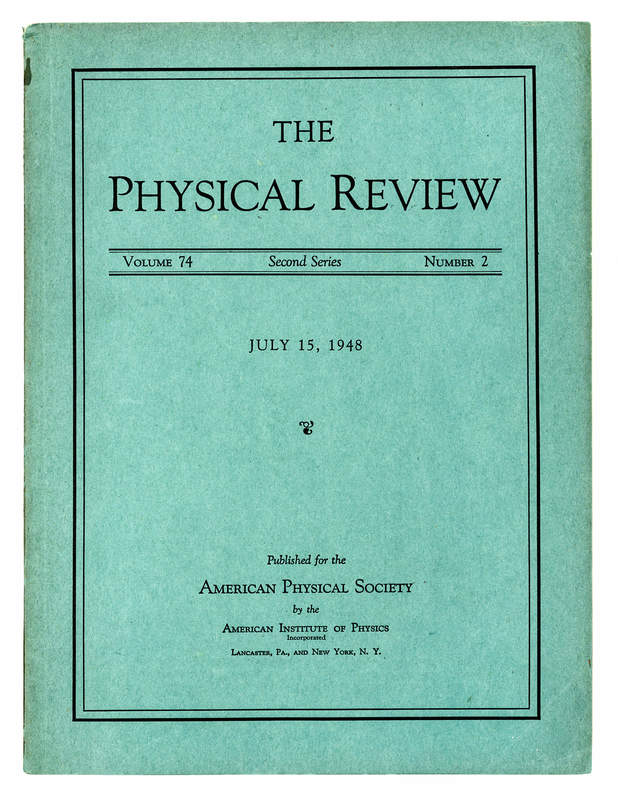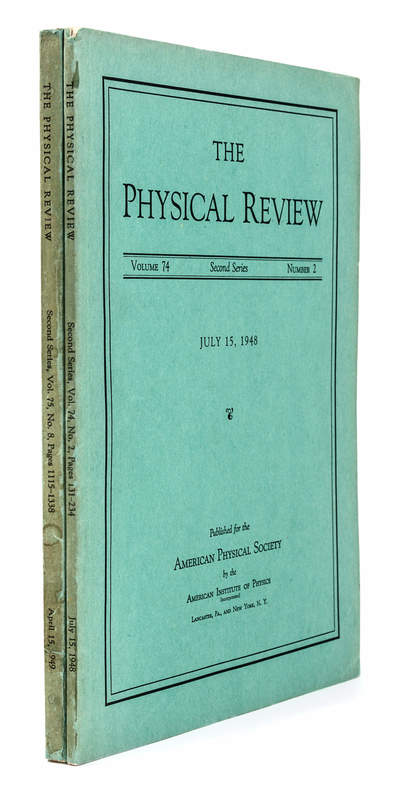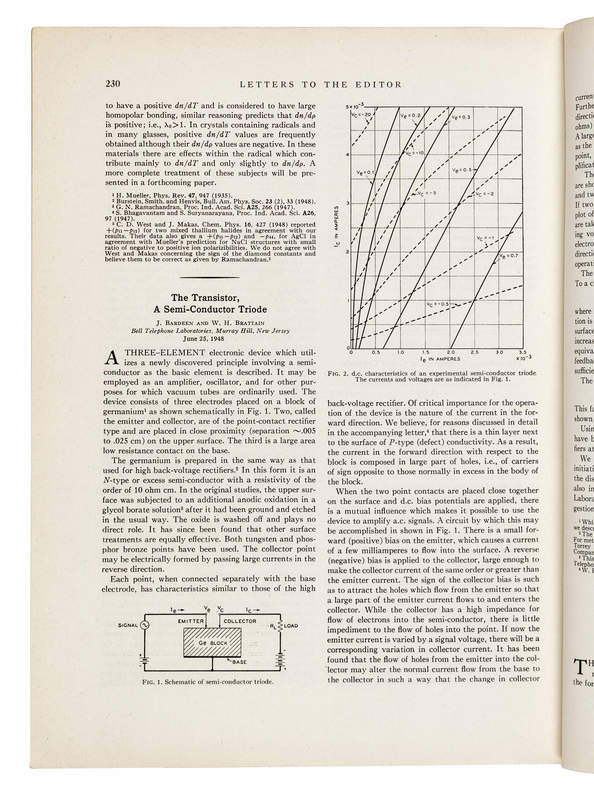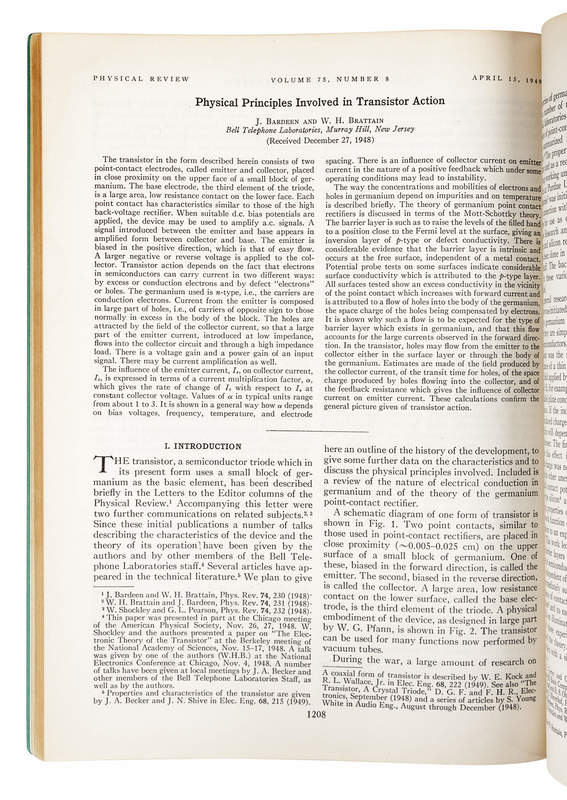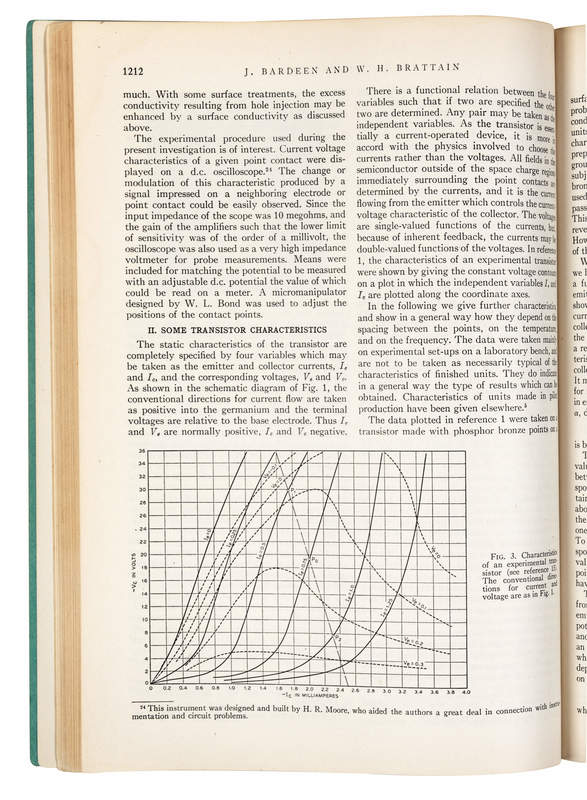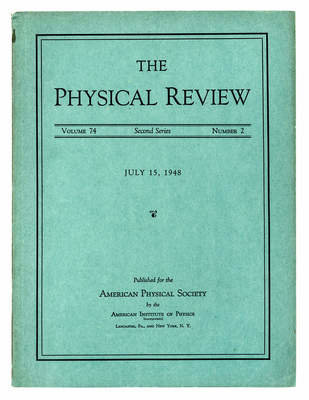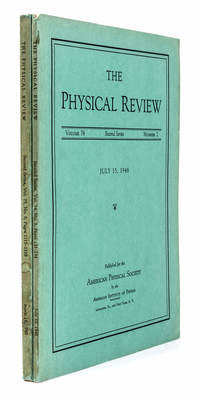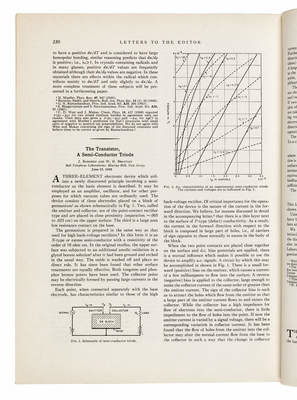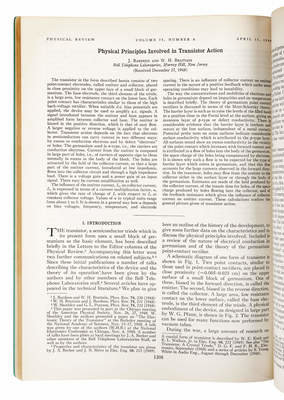Condition Report
Contact Information
Lot 77
[TRANSISTORS]. BARDEEN, John (1908-1991) and Walter H. BRATTAIN (1902-1987). “The Transistor, A Semi-Conductor Triode.” – BRATTAIN, William H. and John BARDEEN. “Nature of the Forward Current in Germanium Point Contacts.” – SHOCKLEY, William Bradford, Jr. (1910-1989) and Gerald. L. PEARSON (1905-1987). “Modulation of Conductance of Thin Films of Semi-Conductors by Surface Charges.” In: The Physical Review, Vol. 74, Second Series, No. 2, pp. 230-233. Lancaster, PA and New York: American Institute of Physics, July 15, 1948. FIRST EDITION.
Sale 714 - Library of a Midwestern Collector
Nov 5, 2019
10:00AM CT
Live / Chicago
Own a similar item?
Estimate
$3,000 -
4,000
Price Realized
$3,500
Sold prices are inclusive of Buyer’s Premium
Lot Description
[TRANSISTORS]. BARDEEN, John (1908-1991) and Walter H. BRATTAIN (1902-1987). “The Transistor, A Semi-Conductor Triode.” – BRATTAIN, William H. and John BARDEEN. “Nature of the Forward Current in Germanium Point Contacts.” – SHOCKLEY, William Bradford, Jr. (1910-1989) and Gerald. L. PEARSON (1905-1987). “Modulation of Conductance of Thin Films of Semi-Conductors by Surface Charges.” In: The Physical Review, Vol. 74, Second Series, No. 2, pp. 230-233. Lancaster, PA and New York: American Institute of Physics, July 15, 1948.
FIRST EDITION of the landmark journal articles that introduced the invention of the transistor which made the microchip revolution possible.
The transistor was successfully demonstrated on December 23, 1947 at Bell Laboratories in Murray Hill, New Jersey. Bell Labs is the research arm of American Telephone and Telegraph (AT&T). The three individuals credited with the invention of the transistor were William Shockley, John Bardeen and Walter Brattain. Shockley played a different role in the invention than the other two. He had been working on the theory of such a device for more than ten years, and while he could work out the theory successfully, after eight years he was unable to build a working model. Bardeen and Brattain were assigned to handle the engineering and development, which they did in the relatively short time of two years, to the consternation of Shockley. Shockley, as their supervisor, shared in the glory. What Bardeen and Brattain had created was the "point-contact" transistor. Shockley subsequently designed a new type of transistor called the "bipolar" transistor which was superior to the point-contact type and replaced it, thereby giving Shockley a large part int the creation of the transistor. Shockley, Bardeen and Brattain were awarded the 1956 Nobel Prize in Physics “for their investigations on semiconductors and the discover of the transistor effect.” Tomash & Williams B88, B89 & S112.
[With:]
BARDEEN, John and William H. BRATTAIN. “Physical Principles Involved in Transistor Action”. In: The Physical Review, Vol. 75, Second Series, No. 8, pp. 1208-1225. Lancaster, PA and New York: American Institute of Physics, April 15, 1949.
The Physical Review issue of the first comprehensive report on the transistor, which was also published in The Bell System Technical Journal the same month (see following lot).
Together, 2 volumes, 4to. Original printed green wrappers (front wrapper of first volume with tiny marginal tear); housed together in cloth folding case.
